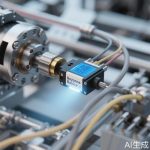In today’s rapidly advancing industrial landscape, the demand for reliable and accurate temperature monitoring in extreme environments has never been greater. High-temperature temperature sensors are at the forefront of this technological revolution, providing critical data in applications ranging from aerospace and automotive to energy and manufacturing. These specialized devices are engineered to withstand temperatures that would render conventional sensors useless, ensuring operational safety, efficiency, and innovation.
What sets high-temperature temperature sensors apart is their ability to perform consistently in environments where temperatures exceed 1000°C (1832°F). Traditional sensors often fail under such intense heat, leading to inaccurate readings, system failures, or even catastrophic accidents. By utilizing advanced materials such as ceramics, refractory metals, and specialized alloys, these sensors maintain their structural integrity and accuracy, offering peace of mind in the most demanding scenarios.
The applications for high-temperature sensors are vast and varied. In the aerospace industry, they monitor engine performance and health, ensuring that turbines operate within safe parameters while maximizing fuel efficiency. In automotive systems, particularly in exhaust and emission control, these sensors help reduce harmful pollutants by providing precise temperature data necessary for optimal catalytic converter operation. Similarly, in industrial furnaces, kilns, and reactors, they enable precise thermal management, enhancing product quality and energy efficiency.
Beyond their robustness, modern high-temperature sensors are increasingly intelligent. Many now come equipped with wireless connectivity and IoT capabilities, allowing for real-time data monitoring and predictive maintenance. This not only reduces downtime but also extends the lifespan of machinery by alerting operators to potential issues before they escalate. The integration of smart technology transforms these sensors from mere measurement tools into proactive components of a larger automated system.
Selecting the right high-temperature sensor requires careful consideration of factors such as temperature range, response time, environmental conditions, and required accuracy. Thermocouples, for instance, are popular for their wide temperature range and durability, while resistance temperature detectors (RTDs) offer higher accuracy for slightly lower temperature applications. Understanding these nuances is key to leveraging their full potential and achieving desired outcomes in any high-stakes environment.
As industries continue to push the boundaries of what’s possible, the role of high-temperature temperature sensors will only grow in importance. They are not just components; they are enablers of innovation, safety, and sustainability. Investing in high-quality sensors is investing in the future—where precision meets extreme conditions, and where technology ensures progress without compromise.




Leave a Message